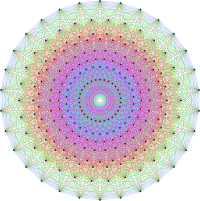Projective linear group

Okay kiddo, imagine that you're playing with toy blocks. You can stack them on top of each other to create different shapes, right? Now imagine that instead of blocks, you have arrows that you can move around and spin.
The projective linear group is like a big group of people who are all playing with these arrows. But they're not just playing with them like normal toys – they're doing math with them! They're figuring out how to move the arrows, and how to combine them together, to make new shapes and patterns.
But there's a catch: these arrows aren't all the same size or shape. Some are longer, some are shorter, some are curved, and so on. That makes it tricky to figure out how to combine them in a way that makes sense.
So the people in the projective linear group have come up with some rules to help them. These rules say things like "if you spin an arrow, you have to do this other thing to another arrow" or "if you move an arrow to a different spot, you have to adjust its size and direction in this way".
By following these rules, the people in the projective linear group can work together to create all sorts of cool patterns and shapes using their arrows. And because they all agree on the same set of rules, they can talk to each other and understand each other's work, even if they're using different types of arrows.
So that's basically what the projective linear group is – a group of people who are all working together to do cool things with arrows, using a set of agreed-upon rules to keep everything consistent and understandable.
The projective linear group is like a big group of people who are all playing with these arrows. But they're not just playing with them like normal toys – they're doing math with them! They're figuring out how to move the arrows, and how to combine them together, to make new shapes and patterns.
But there's a catch: these arrows aren't all the same size or shape. Some are longer, some are shorter, some are curved, and so on. That makes it tricky to figure out how to combine them in a way that makes sense.
So the people in the projective linear group have come up with some rules to help them. These rules say things like "if you spin an arrow, you have to do this other thing to another arrow" or "if you move an arrow to a different spot, you have to adjust its size and direction in this way".
By following these rules, the people in the projective linear group can work together to create all sorts of cool patterns and shapes using their arrows. And because they all agree on the same set of rules, they can talk to each other and understand each other's work, even if they're using different types of arrows.
So that's basically what the projective linear group is – a group of people who are all working together to do cool things with arrows, using a set of agreed-upon rules to keep everything consistent and understandable.
Related topics others have asked about:
